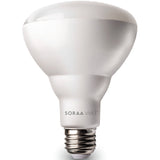LEDs - Trading Simplicity for Flexibility
Posted by Nick on for ProLampSales

As incandescent bulbs have been banned from new manufacture, and LED prices have come down drastically, the light bulb buying public has had to adapt. And it hasn't exactly gone smoothly.
Everyone remembers the failure of CFL bulbs to catch on with the market, but the incandescent bans have pushed consumers and businesses to re-think lighting.
LED lighting has a huge number of benefits, but many of them are a double-edged sword, which have the potential to delight or confuse and frustrate buyers. Let's take a look at some of the challenges the LED market faces that only came into existence with widespread LED technology.
Different Source of Light
Incandescent bulbs create light by heating up a filament. Most incandescent lamps used in homes were 2700K -- consumers didn't have to know about color temperature because their options were limited.
Halogen bulbs burn hotter than incandescent, so had a slightly higher color temp, but not to the range of fluorescent and LED.
When LEDs fist came out, one of the complaints was the lack of colors available, and the odd whitish-bluish light. It took years until the white LED was technologically feasible, and years more until white was a real option.
And in fact, LEDs only produce one color of light. A phosphor is used to convert that color to the range of colors in the visible spectrum.
Color Temperature Ranges
With the wide range of colors and color temperatures available with LED, it puts the burden on manufacturers to represent their products well. But this puts the risk of ugly, mismatched light bulbs on the consumers.
The process of using phosphors to create colored light from LEDs is complex, meaning some manufacturers get it right while others are slightly or badly off.
In any case, this expansion of available colors and color temperatures have required bulb buyers to learn about lighting concepts they never had to deal with before.
Stated Bulb Life
Another challenge consumers have had to adjust to is claims of rated life of LEDs. It wasn't too long ago that many LEDs were advertised as having 75,000 to 100,000 hour lives.
While technically true, LED technology is much more complex than traditional lighting, using more components that could fail prematurely or fail way before the LED itself runs out of light output.
More Complexity, More Ways To Fail
For some lower-quality LED bulbs, the heat sink, driver, or other components may fail before the LED is at all ready to go out or has even diminished much in light quality. If that happens, stated lives of 25,000 to 50,000 hours may be wild overestimates.
If the LED has an expected life of 50,000 hours, but the manufacturer uses low-quality materials for other components, they may not reflect that in the rated life of the bulb. In that case, a premature failure leaves a bad taste in the mouth of lighting end users.
Better Check That Dimmer Compatibility
Incandescent bulbs were easy to use with dimmers, but LEDs are far more complex. Some don't dim at all, and others have a select list of dimmers they are compatible with.
For homeowners moving from incandescent to LED, they usually don't expect to have to replace dimmer switches at the time an old bulb burns out.
Options? No Thanks
For decades, consumers have been trained not to think about or care about options when it comes to replacing a standard light bulb.
They needed to know the wattage, the bulb shape, maybe the base, and maybe if the bulb was halogen or not. There wasn't all this talk of lumens, color temperatures, CRI, and more.
This has really been the revolution in buying behavior for lighting. But as consumers and commercial buyers become more familiar with LED, the benefits will begin to outweigh these challenges.
- Posted in LED
Featured Products (View All)
0 Comments




